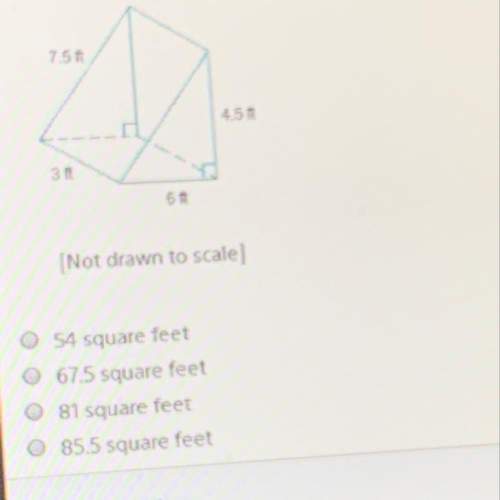
Mathematics, 29.06.2019 18:10 josephnievesr31
Consider two situations: situation 1: in lakeville, melinda’s television cable bill is a flat rate of $50 per month, plus $1.50 for every movie she rents. after one month of service, her bill is $66.25. situation 2: in oceanside, kimberly’s television cable bill is a flat rate of $60 dollars per month, plus $1.25 for every movie she rents. if you were to model these two situations with equations to solve for all the unknowns, what similarities and differences would the equations have? can you solve for all the unknowns in both situations?

Answers: 2


Other questions on the subject: Mathematics

Mathematics, 21.06.2019 18:20, hihihi129473838
What is the y-intercept of the line given by the equation
Answers: 2

Mathematics, 21.06.2019 19:00, megkate
1. writing an equation for an exponential function by 2. a piece of paper that is 0.6 millimeter thick is folded. write an equation for the thickness t of the paper in millimeters as a function of the number n of folds. the equation is t(n)= 3. enter an equation for the function that includes the points. (-2, 2/5) and (-1,2)
Answers: 1

Mathematics, 21.06.2019 21:40, joeykyle05
Write the contrapositive of the conditional statement. determine whether the contrapositive is true or false. if it is false, find a counterexample. a converse statement is formed by exchanging the hypothesis and conclusion of the conditional. a) a non-converse statement is not formed by exchanging the hypothesis and conclusion of the conditional. true b) a statement not formed by exchanging the hypothesis and conclusion of the conditional is a converse statement. false; an inverse statement is not formed by exchanging the hypothesis and conclusion of the conditional. c) a non-converse statement is formed by exchanging the hypothesis and conclusion of the conditional. false; an inverse statement is formed by negating both the hypothesis and conclusion of the conditional. d) a statement not formed by exchanging the hypothesis and conclusion of the conditional is not a converse statement. true
Answers: 1

Mathematics, 21.06.2019 22:30, lekepius3715
Given the system of equations presented here: 2x + 4y = 14 4x + y = 20 which of the following actions creates an equivalent system such that, when combined with the other equation, one of the variables is eliminated? multiply the second equation by â’4 to get â’16x â’ 4y = â’80 multiply the second equation by â’1 to get â’4x â’ y = â’20 multiply the first equation by 2 to get 4x + 8y = 28 multiply the first equation by â’1 to get â’2x â’ 4y = â’14
Answers: 1
You know the right answer?
Consider two situations: situation 1: in lakeville, melinda’s television cable bill is a flat rate...
Questions in other subjects:




Biology, 26.06.2019 07:30




History, 26.06.2019 07:30


Spanish, 26.06.2019 07:30





